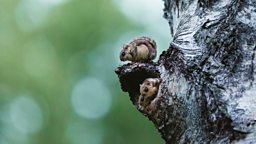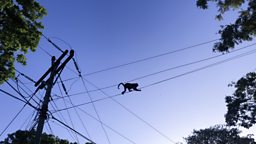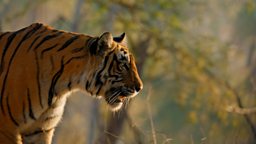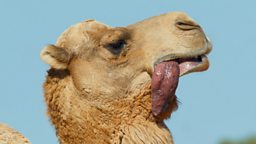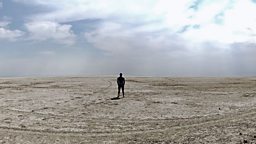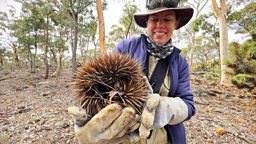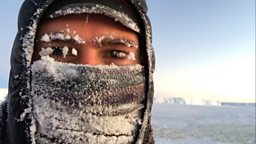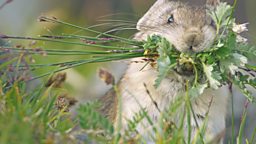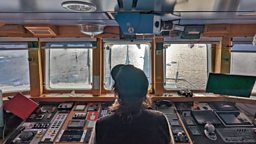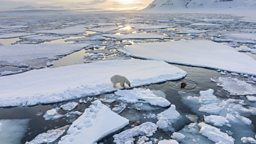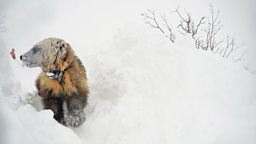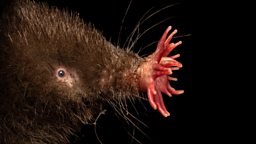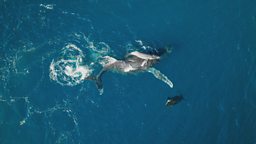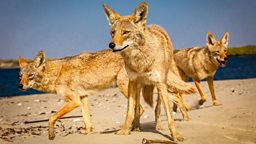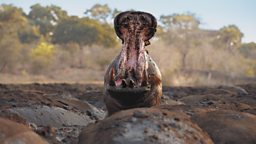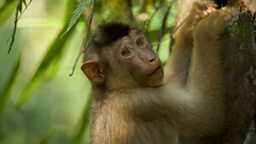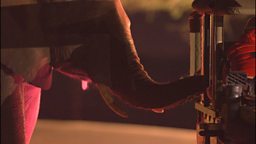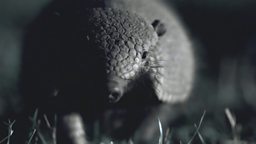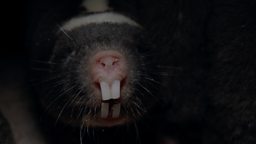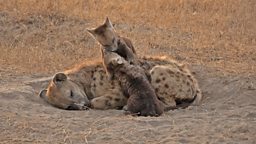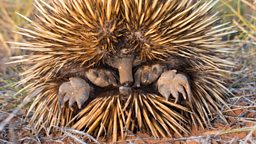Overcrowding hippos in Tanzania's dry season
by Stuart Trowell, Camera Operator for Mammals
It was early morning as we jumped out of the vehicles. The sun hadn’t risen yet but there was a faint light on the horizon.
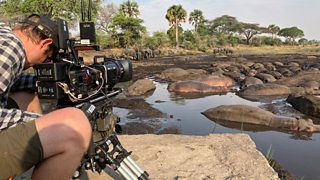
We grabbed the filming equipment and started to make our way down to the drying river, our head torches lighting up small sections of the landscape as we nervously scanned the area around us. Even though it was a short walk it took quite some time to get into position as each footstep was gingerly placed in front of the other, eyes and ears straining to detect any nearby animals which we might startle.
It was slow going but we finally reached our destination, and there in the faint dapple of the pre-dawn light was a pod of hippos all pressed in and amassed in a small muddy pool. The loud bellows of their wheezes and honks erupting pierced through the calm stillness of the morning. The closest ones provided us with a small jump scare every now and then.
The ambition for this sequence was certainly a daunting one. We were setting out to capture an intimate story which would reveal the trials that hippos have to go through during the hot dry seasons in Tanzania. There was good reason to be concerned. Hippos are one of the most dangerous animals in Africa and have a reputation for being highly aggressive and territorial. So how on earth were we going to get close enough to film them in an engaging way that didn’t put ourselves and the equipment at risk, or stress the big beasts out?
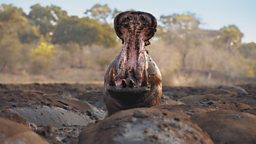
As it was dry season boats weren’t an option, so we’d have to somehow film them safely from the mud banks and dry land. Fortunately, the research had narrowed down our options and we were in the ideal location - a small muddy pond which was inhabited by a huge number of hippos. But most importantly, right next to this pool was a well which was frequently used by people. This meant that the pod were used to seeing humans in close proximity and were (most of the time) relaxed in our presence.
The sheer number of hippos all crammed into one small space, all desperately pushed up together in order to cool themselves and escape the baking heat of the sun was astonishing.
The next issue was getting right amongst the pod to get immersive shots of them. The well was a perfect platform to set up a crane so that we could gently lower a camera on a gimbal down to the hippos eye level. With Lydia controlling the crane arm and myself operating the gimbal we were able to achieve stunning low level shots that really put the audience in among the pod. I was amazed at how relaxed they were with the camera at this level.
Even so I still spent most of the time nervously glancing at the gimbal expecting a hippo to either be chewing it or attempting to use it as a rubbing post. Along with the crane we also used a drone to get aerial shots of the pod. These really helped to put everything in perspective.
The sheer number of hippos all crammed into one small space, all desperately pushed up together in order to cool themselves and escape the baking heat of the sun was astonishing. Several hundred at least. From above, the scene is quite surreal. It’s only as you descend and start to see the details that you realise each one is a hippo contending for a little patch of mud.
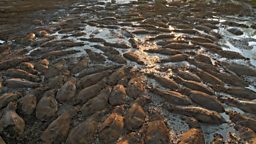
Sadly, these scenes are not entirely due to it just being the dry season.
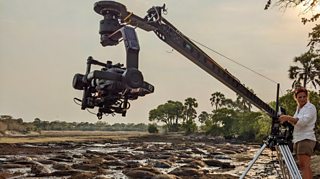
Like so many places in the world, there is pressure on the river here from upstream water use. It’s incredibly hard watching and filming wildlife struggling for water – a huge range of different species were gathered around what water was left, and sometimes this could make us feel quite hopeless.
However, the more we talked to people and read around, the more we discovered that there is hope for the park and for the future of the river. A few years ago the river would completely dry up for several months a year, but thanks to monitoring, research and efforts to restore the ecosystem, the flow is slowly starting to return to some degree.
With perseverance the sequence was a success. We managed to really immerse ourselves in the pod and tell their story, as well as film some new interesting behaviours; such as marabou storks fishing from the backs of the hippos and crocodiles hunting pelicans. On top of it all we managed to do it with ourselves and all the equipment intact. Not bad for filming one of Africa’s most feared animals!

